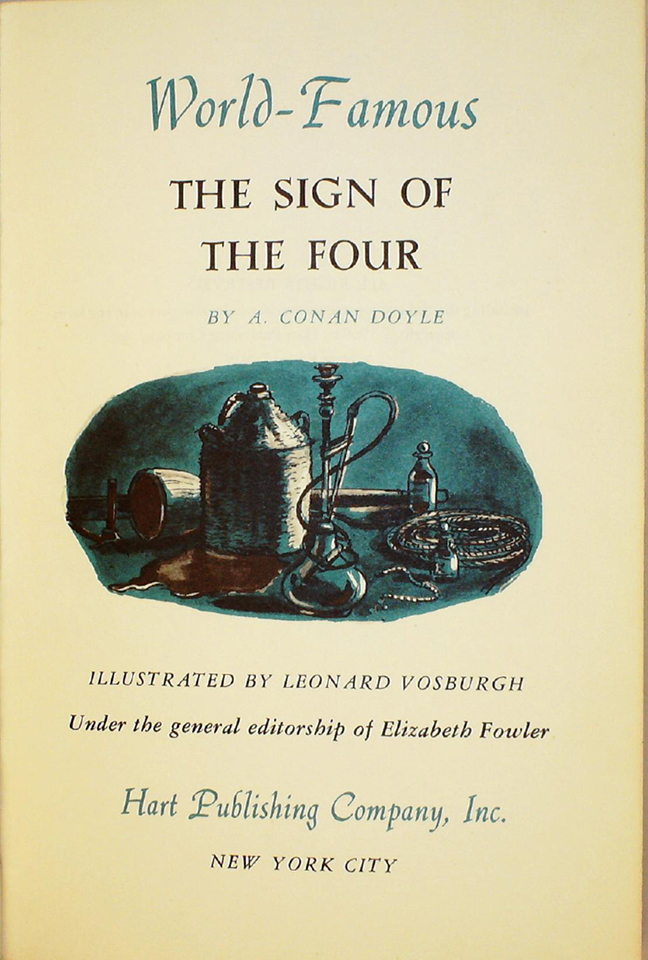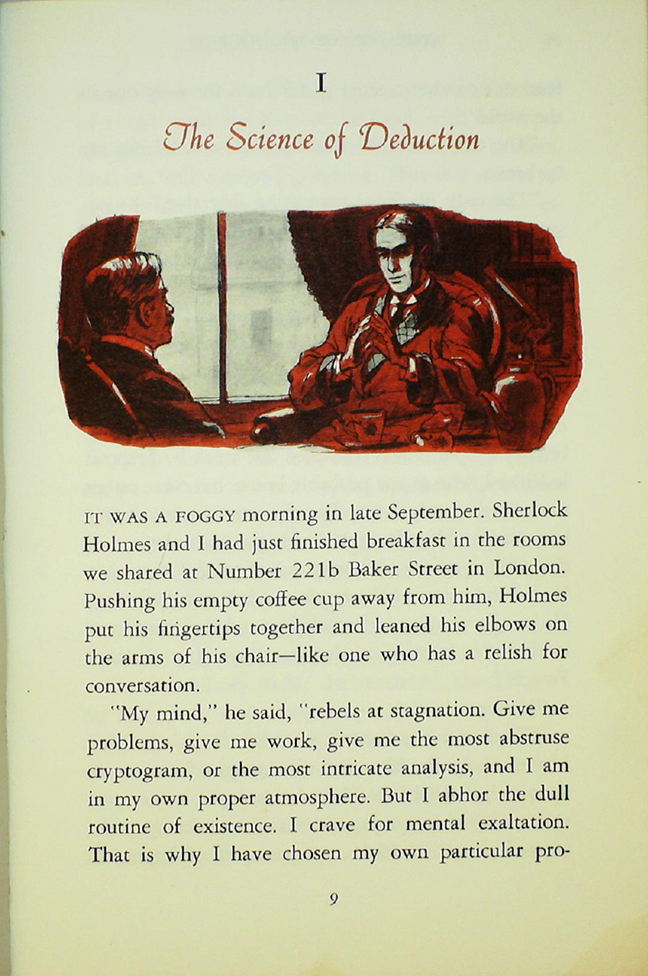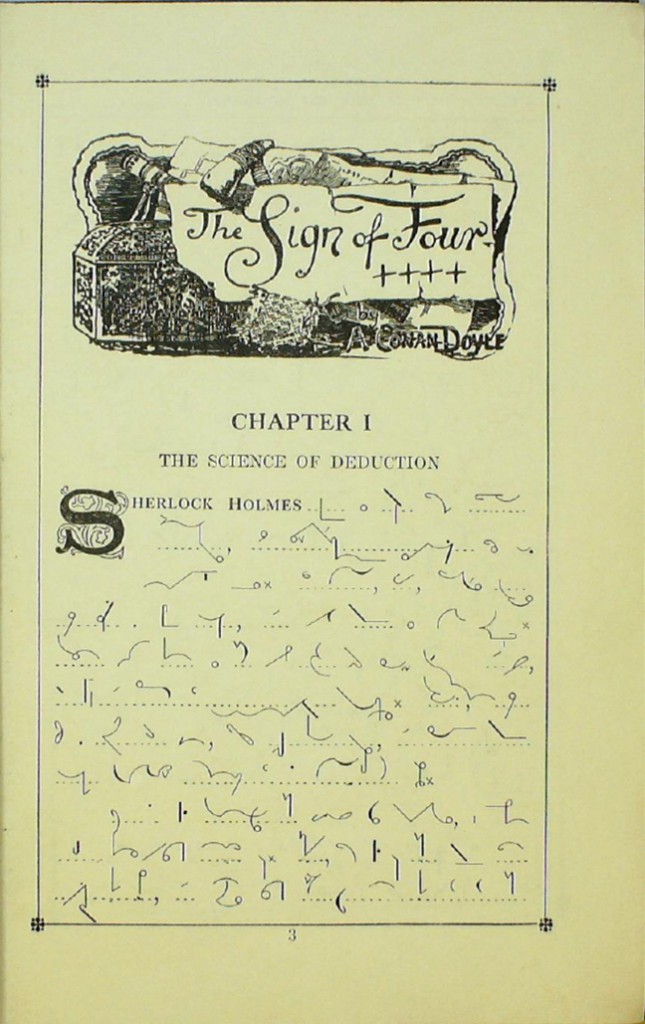 This post is part of an ongoing series featuring items recently cataloged from the Julio Mario Santo Domingo Collection.
This post is part of an ongoing series featuring items recently cataloged from the Julio Mario Santo Domingo Collection.
Among the works of Arthur Conan Doyle, the Fitz Hugh Ludlow Memorial Library took a particular collecting interest in his second Sherlock Holmes novel, The sign of the four. The novel’s opening lines, here quoted from the Ludlow’s third edition of the George Newnes edition (left), serve to explain why:
Sherlock Holmes took his bottle from the corner of the mantelpiece, and his hypodermic syringe from its neat morocco case. With his long, white, nervous fingers he adjusted the delicate needle, and rolled back his left shirt-cuff. For some little time his eyes rested thoughtfully upon the sinewy forearm and wrist, all dotted and scarred with innumerable puncture-marks. Finally, he thrust the sharp point home, pressed down the tiny piston, and sank back into the velvet-lined arm-chair with a long sigh of satisfaction.
…
‘Which is it to-day,’ I asked, ‘morphine or cocaine?’
He raised his eyes languidly from the old black-letter volume which he had opened.
‘It is cocaine,’ he said, ‘a seven-per-cent. solution. Would you care to try it?’ (1892 Newnes edition, pages 1-3)
The scene progresses into a disagreement between Holmes and Watson on the advisability of the former’s drug-taking: Holmes sees the cocaine as an escape from the intolerable dullness of life between cases, while Watson fears for his Holmes’s health. (In a later story, The adventure of the missing three-quarter, Watson describes having weaned his friend off of his narcotic habit.)
Here we have much of the substance of Sherlock Holmes’s reputation as a drug user. Part of the study of drugs in literature, however, is the study of their absence. Among the Ludlow Library’s holdings are multiple abridgments from which all reference to drugs has been expunged. The one pictured below is an illustrated 1960 Hart Publishing edition intended for younger audiences. It opens on a fabricated scene-setting paragraph, and moves into a revised version of the argument mentioned above. Holmes again proclaims his disdain for mental stagnation, but declines to mention any recreational means of avoiding it.
Finally, a curiosity that hints at the depth of the Ludlow Library’s collection. The third version of The sign of the four pictured here is faithful, one assumes, to the original text, but is printed entirely in Pitman shorthand, one of the two shorthand systems most popular in the early twentieth century. Both systems used symbols to represent phonemes rather than words (such that the symbols for rye and wry would be identical). One distinguishing feature of Pitman is that pairs of unvoiced and voiced consonants, such as p/b or t/d, use the same marks, but are differentiated by their thickness. To the uninitiated, only numerals and punctuation marks are decipherable. A volume like this could have been used for practice in translating shorthand back to written English, or simply read for pleasure. The Santo Domingo collection augments an already-considerable Doyle collection at Houghton: this volume is only one of two Pitman shorthand editions held here.
Newnes edition: EC9.D7722.892sc
Hart abridged edition: EC9.D7722.960s
Pitman shorthand edition: EC9.D7722.Ez930s
Thanks to rare book cataloger Ryan Wheeler for contributing this post.




